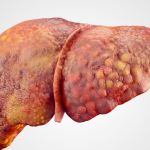The “No Flush” Niacin Folly
The Expert Report : Interview with Joseph M. Keenan, MD
Mark Swanson, ND
Wax-Matrix Extended-Release Niacin vs “No-Flush” Inositol-Hexanicotinate
Niacin is one amazing vitamin. It is best known for its powerful non-deficiency use for lipid management. It has also been “headlines news” recently as the subject of several large clinical trials. The impact of these study outcomes will no doubt be debated for years to come.1,2 For NDs and integrative clinicians, in particular, this interview subject is about a smaller and lesser-known study that may have a similar impact and importance for those still using the “no-flush” inositol hexanicotinate (IHN) form of niacin.3 This Expert Report interview is one of the most engaging and revealing discernments on IHN so far, and also provides excellent updated instructions and insight on the proper uses of niacin for lipid disorders, with a special focus on wax-matrix extended-release (ER) niacin, or “WMER-niacin”. All of which is the expertise and research forte of my most distinguished guest, Joseph Keenan, MD, the reigning research patriarch of WMER-niacin. With that honor bestowed, I welcome Dr. Keenan to The Expert Report.
About Dr. Keenan
What is your educational background and current position?
Dr. Keenan: I received my MD degree from the University of Minnesota in 1968 and became board-certified in Family Medicine. I spent my first 17 years in general family medicine in a small town in Minnesota where I was also the “de facto” cardiologist in our 12-physician group and small hospital. In 1986, I was invited to join the University of Minnesota Medical School faculty and over the next 22 years I was able to focus on my research interests with over 50 published papers. In 2008, I retired from the University, but continue part-time research and writing and primarily practice emergency medicine for my clinical activity.
How did you become interested in studying niacin for dyslipidemia?
Dr. Keenan: My brother, Charles Keenan, MD, had done a pilot study using wax-matrix extended-release niacin (WMER-niacin) in his practice in Santa Monica in collaboration with one of his patients, Robert Kowalski, author of the best-selling book, “The 8-Week Cholesterol Cure.” 4 The WMER-niacin pilot study had very positive results and was the foundation of Kowalski’s “cure.” They contacted me at the University of Minnesota and asked if I would conduct a full-scale clinical trial of WMER-niacin. That type of study matched my research interests well, so I agreed to do a fully powered and randomized clinical trial.5
Clinical Studies
You have been the principal investigator in a number of wax-matrix ER-niacin studies on dyslipidemia. What exactly is “wax matrix” ER-niacin?
Dr. Keenan: Our research group has conducted 4 clinical trials using WMER-niacin3,5,6,7 and the Harvard research group has also done several8; all of these trials have shown excellent tolerance, with dropout rates typically only 3-4%, due to side effects. That compares more favorably to the intolerance rates of other niacin formulations (typically 14 to 40+%) and statins (20%). The wax-matrix concept takes advantage of unique and consistent release properties of the wax-matrix formulation. As the wax-matrix tablet transits the intestinal tract, it slowly softens and melts in the normal core temperature of the body, releasing the niacin gradually over 6 to 8 hours. The only cautions to the patient are: don’t take WMER-niacin with hot foods or beverages, or after heavy exercise, since either can raise the core body temperature and accelerate free-niacin release.
Pharmacokinetic Comparisons
Explain the pharmacokinetic difference between immediate-release, sustain-release, and extended-release niacin.
Dr. Keenan: Immediate-release (IR) is simply the crystalline or unmodified niacin which is quickly dissolved and released over 1 to 2 hours in the gut after ingestion. This presents the liver with relatively high concentrations of free-niacin in the portal vein and, as a result, proportionally more of the dose escapes first-pass clearance/metabolism by the liver and enters the systemic circulation as free niacin. These kinetics typically require a higher dose (2-3x) and have the benefit of greater increases of HDL cholesterol than slower-release forms of niacin, but are associated with much higher rates of flushing (30-40+%). In an effort to reduce the flushing seen with immediate-release, a variety of sustained-release niacins (SR) have been developed, which deliver the dose of niacin over 12-24 hours or longer. These slower-releasing compounds were generally successful in reducing flushing side effects, but the continuous exposure of the liver to niacin via the portal circulation was associated with an increased incidence of hepatotoxicity. This observation has led to substantially reduced dosages compared to immediate-release niacin and formulations that were more intermediate in their kinetics (release over 6-8 hours). These formulations are called extended-release niacin (ER) and they offer the advantage of reduced side effects compared to immediate-release (IR), and lower hepatotoxicity compared to sustained-release (SR).
WMER-Niacin vs Prescription Niacin
How do the pharmacokinetics of wax-matrix ER-niacin compare to the leading prescription niacin?
Dr. Keenan: Both of these formulations under usual circumstances have good extended-release kinetics; however, WMER-niacin is about one-twentieth the cost. In our recent study of WMER-niacin kinetics, we demonstrated a peak absorption at about 30 minutes and almost complete absorption by 6-8 hours, and it was exceptionally well tolerated, with only 1 person (out of 40) dropping out due to side effects.3 The prescription niacin accomplishes extended-release by gradual hydration of the methylcellulose vehicle to become a gel or slurry, allowing the niacin to leach out gradually during gut transit. Unfortunately, the release rate can be altered by peristaltic activity, which can disperse the niacin from the hydrated slurry more rapidly. Taking the prescription niacin with meals will increase flushing incidence also.
Dosage Recommendations
What is the recommended dose and expected lipid responses of wax-matrix ER-niacin?
Dr. Keenan: Our first clinical trial with WMER-niacin5 was a dose response study testing the range of dosing from 250 mg per day to 2000 mg per day. We found for most persons, the optimal dose for overall lipid benefits with the least toxicity and side effects was 1500 mg per day. Many persons tolerate 2000 mg per day well, but the incremental lipid benefit was modest. If the lipid goal is primarily raising HDL and you prefer using WMER-niacin over immediate-release niacin, the dose response peaks at about 1000 mg and then plateaus or even drops. This is quite different than the LDL response, which increases with increasing dose. Another very interesting observation from the dosing study, which was confirmed in our recent study and also noted in a Harvard Research group study,8 is that a subset of subjects (approximately 10-15%) demonstrated a unique sensitivity to niacin. These subjects appear intolerant of niacin at usual therapeutic doses, but have an excellent lipid response with good tolerance at substantially reduced doses (250-1000 mg/day). Clinicians should be aware of this phenomenon and offer a patient who appears intolerant of niacin an opportunity for trial at a lower dose.
WMER-Niacin vs IHN Study
Your most recent study in the Journal of Clinical Lipidology compares wax-matrix ER-niacin with “no-flush” inositol hexanicotinate (IHN).3 This is the first IHN study in over 30 years and the first ever in the US. Why did you decide to use IHN?
Dr. Keenan: Early animal studies with IHN suggested it would be effective in lowering cholesterol, and several uncontrolled human trials using IHN in conjunction with other lifestyle changes and diet showed improved lipid levels. The added appeal of IHN was the fact that there was no flushing or other adverse side effects that had been so limiting in niacin use to date. More recently, however, several case reports have suggested that IHN may not be effective at improving lipids. Despite the growing evidence that IHN may not be effective, many health care providers, and especially in Europe, have continued to recommend it. There had never been a randomized controlled trial of IHN and we felt that a proper study would be important to resolve the effectiveness controversy.
Please highlight the study design, methods and your findings.
Dr. Keenan: From previous work our research group knew that a fully-powered trial of a niacin product would require at least 38 subjects in each arm of the study to be able to have statistically significant results. Our target population was persons who had mild-to-moderate dyslipidemia (LDL cholesterol 130-190 mg/dL) and who were not on any other treatment for their dyslipidemia. In other words, these were persons who might be considered candidates for niacin therapy in clinical practice.
The study was a 3-parallel arm design (IHN, WMER-niacin, and placebo arms) of 40 subjects in each arm. Subjects (n=120) were randomized to each arm and had an initial 4-week diet and activity stabilization phase after instruction in a heart-healthy diet. They then started a 6-week trial of 500 mg 3 times a day of IHN, WMER-niacin, or look-alike placebo, and had lipids, blood chemistries, dietary behavior (3-day food records), and side effect monitoring at baseline and every 3 weeks of the study. Subjects were instructed to start with 500 mg (a single dose) for the first 3 days, advance to 2 X 500 mg dose (1000 mg /d) for days 4-6, and begin the full 3 X 500 mg dose (1500 mg /d) on day 7 to allow physiologic tolerance to develop and minimize flushing.
A subgroup of 5 subjects randomly selected from each arm of the study had a pharmacokinetic study conducted on their first 500 mg dose conducted in our research center in a strictly controlled setting. Timing of the dose, timing of blood sampling over the next 8 hours, meals and activity, and handling of blood samples were all precisely controlled to assure accurate comparisons. Assays of blood levels of nicotinic acid, and metabolites (nicotinuric acid and nicotinamide) were measured hourly and a 24-hour urine collection of the same.
As noted earlier, we know that 10-15% of subjects are uniquely sensitive to niacin and require a lower dose to get comparable results. So we included a dose reduction protocol to allow persons who had side effect or blood chemistry problems at the 1500 mg dose to continue in the study at a dose they could tolerate.
IHN – A perfect placebo?
Dr. Keenan: The results of the study could not be more conclusive. IHN has no different lipid effects than placebo and, what was actually somewhat of a surprise, IHN shows no evidence of bioavailability! There was no increase in blood niacin levels or metabolites over the 8 hours of monitoring or 24-hour urine collection. IHN demonstrated no evidence of lipid improvement. In contrast, WMER-niacin showed significant improvements in total cholesterol (-11%), LDL cholesterol (-18%), HDL cholesterol (+12%) and non-HDL cholesterol (-15%), all p < .001. Furthermore, WMER-niacin was well tolerated with no significant toxicity and only 1 subject dropping out due to side effects. Six subjects (15%) completing the study on the dose reduction protocol, with comparable lipid results to the full dose group.
I have a hunch you were not surprised at the complete lack of effect of IHN on lipids from your trial. Am I correct?
Dr. Keenan: You are correct. Our study hypothesis was that IHN would be no better than placebo in lipid effects, and to make the study even more conclusive we added a comparison arm using WMER-niacin as a comparator, and we added a pharmacokinetic sub-study to measure the bioavailability (absorption and metabolism) of both IHN and WMER-niacin.
The failure of IHN on lipids became known by practitioners some years ago. Yet, it continues to be recommended. Don’t they test lipids? Were the original IHN-lipid studies that convincing?
Dr. Keenan: Not at all, the opposite in fact. The main problem with the original research was the extrapolation from one rabbit study showing lipid benefits, to the expectation that IHN would be similarly effective in humans. IHN was not patented, so there was little economic motivation to proceed to appropriate IHN clinical trials in humans. Niacin in other forms had been shown to be effective; thus, there was enthusiasm for adding a “no-flush” form of niacin to combination interventions for lipid disorders. The only consistent positive result from IHN use was the complete absence of bothersome niacin side effects. Without controls, however, it was impossible to assess whether IHN had any contribution to any observed lipid benefits. Any positive results were, in part, ascribed to IHN and perpetuated the impression that IHN had benefit.
Knowing the truth now that IHN is a colossal failure on lipids and it has no niacin activity – isn’t this the nail in the coffin?
Dr. Keenan: This is indeed the nail in the coffin for IHN. This is not only a fully powered clinical trial of IHN in appropriate subjects showing no benefit, it is substantiated by the pharmacokinetic sub-study showing complete lack of bio-availability. These results not only have obvious clinical implications, but raise ethical issues of continuing to use IHN for dyslipidemia and even market it as a vitamin supplement.
Niacin in Lipidology
As we conduct this interview, niacin is once again in the lipid research headlines. The results of HPS2-THRIVE trial recently reported a lack of effect of an ER-niacin/laropiprant combination to improve cardiovascular outcomes.1 The earlier AIM-HIGH trial,2 had a similar outcome using ER-niacin alone. Both trials were with patients who were already at LDL goal with statins. Both reported niacin risks outweighed the benefits. Where does this leave niacin as a viable lipid therapy option?
Dr. Keenan: It is clear that both of these very large clinical trials of niacin combination therapy with statins convincingly demonstrated no added benefit and possible harm when adding niacin therapy to a person already at ideal levels of LDL cholesterol on statins alone. That is useful information and should deter clinicians from using niacin to improve HDL levels if LDL is already at goal with statins. These studies do not, however, diminish the many appropriate clinical indications for niacin therapy. There is a very large body of existing niacin research showing benefit in both primary end points (death, vascular events) and secondary endpoints (lipid improvements, atheroma regression, vascular intimal thickness changes). There remains a substantial number of persons who cannot get to their LDL goal on statins alone, and others who are intolerant of statins for whom niacin is a valuable agent. Niacin remains the best agent for raising low HDL, and the only agent effective for lowering Lp(a) cholesterol, both of which are independent risk factors for vascular disease. The National Lipid Association, the nation’s largest organization of lipidology experts, recently went on record with a statement reaffirming niacin’s role in lipid management, and cautioning against overreaction or inappropriate conclusions from the publicity of these 2 large studies.
Is the best understanding and use of niacin’s lipidology yet to come?
Dr. Keenan: I would agree with that. We are just beginning to learn the many functions of HDL cholesterol that go well beyond our former assumption, which was that its main benefit was reverse cholesterol transport. We still don’t understand well the role of Lp(a) in vascular disease and the full impact of changing lipoprotein particle size and numbers. What appears likely and is perhaps the main finding of the recent large trials (AIM-HIGH and HPS2-THRIVE) is that better knowledge of lipid disorders will result in better targeting of lipid agents. The fact that niacin has an impact on more lipid fractions and functions than any other agent, seems almost certain to indicate that it will remain a valuable agent in dyslipidemia management.
ER-Niacin Protocol Update
Can you share some of the clinical pearls you might have from 25 years of research and clinical practice on how and when to use niacin?
Dr. Keenan: Yes, absolutely. Niacin is one of the most useful agents available for lipid management. It is often my first choice for mild-to-moderate dyslipidemias, especially those associated with metabolic syndrome. If the LDL level is greater than 20% above the individual’s NCEP guidelines goal, then I will start with a statin. However, well over half of persons with dyslipidemia can reach their LDL goal with modest lifestyle changes and niacin. I like the fact that with one inexpensive agent, I am targeting so many lipid variables – LDL, HDL, triglycerides, Lp(a), and LDL particle size, which is not possible with any other agent! Unless I am treating an isolated extremely low HDL problem (15-20 mg/dL), for which I will use immediate-release, 4000-6000 mg/d in divided doses, I always use an extended-release form of niacin. As discussed earlier, there are 2 forms of extended-release niacin – wax-matrix and polygel. Both are effective, but I prefer the wax-matrix because of more reliable release and it is very inexpensive. I recommend starting persons on 500 mg/d for several days and then “ramping up” the dose over 1-2 weeks to an initial target level of 1500 mg/d. When initiating treatment, I recommend patients take their dose with meals or at least 2-3 glasses of water. They can take a 325 mg aspirin with each dose if they experience flushing. Most persons don’t flush with a 500 mg dose of WMER-niacin so they rarely have significant problems using a 3-times-a-day regimen. If patients don’t have flushing problems and they prefer the convenience of once-a-day dosing, the entire dose can be taken in the evening. Evening timing of a single dose is desirable, since the peak effect coincides with the time of day that hepatic lipid synthesis is most active.
I also start with baseline measures of lipids and the following blood chemistries – glucose, liver function, creatine phosphokinase, and uric acid. If the patient is tolerating therapy well, I do my first recheck of lipids and blood chemistries at 6 weeks. By 6 weeks you will see what improvement in lipids is obtainable at that dose and can make adjustments if needed. Generally, the LDL goal is the key lipid variable for which I adjust therapy. If I haven’t reached goal and blood chemistries are normal, I will push the dose to 2000 mg /d. Higher doses are possible, but the side effect-toxicity / lipid benefit ratio is often limiting. Another option, if the patient has been on a single 1500 mg dose in the evening, is to return to a 500 mg 3-times-a-day dosing schedule, which is more effective at lowering LDL than the single evening dose. Blood glucose and liver enzymes will often be borderline-elevated at the first recheck and do not require dose adjustment unless liver enzymes are twice upper limit of normal or blood glucose is greater than 140 mg/dL. Hepatotoxicity with niacin therapy is usually evident within the first 2 months, so if a patient is tolerating it well beyond that, they will usually not have problems. Keep in mind, those 10-15% of persons who are niacin-sensitive will do well with a simple dose reduction. Another common cause of liver enzyme elevation is excessive alcohol consumption. If liver enzyme changes occur after 2 months therapy, alcoholism should be suspected. Persons should be cautioned about immoderate alcohol intake. I will recheck lipids and blood chemistries at 6-week intervals until I have reached a maintenance dose that is well tolerated and delivering the lipid results desired. Gout and myopathies with niacin monotherapy are very uncommon and those chemistries (uric acid and CPK) don’t have to be monitored every follow-up visit. I will follow a patient long-term at 3 to 6-month intervals with lipid and chemistry monitoring as a routine.
As for patients for whom niacin therapy would be appropriate, the statin-intolerant patient, or patient who cannot get to LDL goal on statin monotherapy, are good candidates. Persons with isolated low HDL, persons with high Lp(a), persons with high triglycerides, and, as mentioned earlier, persons with mild/moderate dyslipidemia and persons with metabolic syndrome are also all good candidates for niacin therapy. Glycemic control must be monitored in niacin-treated persons with metabolic syndrome, but studies of niacin therapy in type 2 diabetics did not show problems with diabetes control. One caution, perhaps, in light of the recent combination niacin/statin studies, would be to stop niacin entirely if unable to reach LDL goal on niacin monotherapy before starting a statin. As stated earlier, our advances in better understanding lipidology will undoubtedly guide us to better targeting of our lipid therapies.
Would 750 mg BID be the ideal “sweet spot” for patient dosing of WMER-niacin?
Dr. Keenan: Yes, for most that would be the ideal dose for lipids, with very low risk of side effects and toxicity.
Dr Swanson’s Closing Comments
Thank you Dr. Keenan. This is one of the most informative niacin study insights and protocol updates ever, from a well-qualified expert. It provides extremely valuable clinical management information for heart attack and stroke prevention among NDs and can be put to use almost immediately in practice, including what no longer should be used. Patients can start to benefit right away and can be assured they are taking the proper form of niacin, with the lowest incidence of flushing and side effects. If any clinician, after reading this interview and Dr. Keenan’s latest study, is still clinging to the use of “no-flush” inositol hexanicotinate in patient care – the message is clear – they should stop immediately and initiate another niacin option or dyslipidemia agent. The reason IHN is “no-flush” is that it is not bioavailable and fails to release any detectable free-niacin or niacin metabolites. If someone disputes Dr. Keenan’s study findings and will offer up copies of IHN lipid panel results that show a positive treatment response on lipids, I’ll be happy to post that with a rebuttal interview with the clinician for a follow-up segment of The Expert Report. Until then, let’s consider this the demise of IHN – as the niacin that wasn’t.
Further Reading
- An excellent review and must-read article on the subject of niacin-lipids, including IHN, was recently co-authored by Douglas Mackay, ND, Vice President, Scientific & Regulatory Affairs for the Council for Responsible Nutrition (CRN), Washington, DC, and also serves on the Editorial Board of the Natural Medicine Journal.9
- For further information on niacin safety and dosing instructions, please refer to references #10 and #11.10,11
 Mark Swanson, ND, writes “The Expert Report” column, which is featured in NDNR. Dr. Swanson has over 25 years experience as chief medical advisor, research and technical consultant, and products formulations expert to leading practitioner brand supplement manufacturers. He is a former associate editor for the American Journal of Naturopathic Medicine, national product director, and published researcher. He is a pioneer graduate of Bastyr University, 1984. Dr. Swanson has his private practice specializing in Preventics Care and Functional Medicine, in Sequim, Washington. Contact: [email protected]
Mark Swanson, ND, writes “The Expert Report” column, which is featured in NDNR. Dr. Swanson has over 25 years experience as chief medical advisor, research and technical consultant, and products formulations expert to leading practitioner brand supplement manufacturers. He is a former associate editor for the American Journal of Naturopathic Medicine, national product director, and published researcher. He is a pioneer graduate of Bastyr University, 1984. Dr. Swanson has his private practice specializing in Preventics Care and Functional Medicine, in Sequim, Washington. Contact: [email protected]
References
- HPS2-THRIVE. Welcome to the HPS2-THRIVE trial. Updated March 10, 2013. http://www.thrivestudy.org. Accessed April 28, 2013.
- AIM-HIGH Cholesterol Management Program. http://www.aimhigh-heart.com. Accessed April 28, 2013.
- Keenan JM. Wax-matrix extended-release niacin vs inositol hexanicotinate: a comparison of wax-matrix, extended-release niacin to inositol hexanicotinate “no-flush” niacin in persons with mild to moderate dyslipidemia. Journal of Clinical Lipidology. 2013;7(1):14-23.
- Kowalski R. The New 8-Week Cholesterol Cure. 2nd ed. New York, NY: HarperTorch; 2006.
- Keenan JM, Fontaine PL, Wenz JB, et al. Niacin revisited. A randomized, controlled trial of wax-matrix sustained-release niacin in hypercholesterolemia. Arch Int Med. 1991;151(7):1424-1432.
- Keenan JM, Wenz JB, Ripsin CM, et al. A clinical trial of oat bran and niacin in the treatment of hyperlipidemia. J Fam Pract. 1992;34(3):313-319.
- Aronov DM, Keenan JM, Akhmedzhanov NM, et al. Clinical trial of wax-matrix sustained-release niacin in a Russian population with hypercholesterolemia. Arch Fam Med. 1996;5(10):567-575.
- Alderman JD, Pasternak RC, Sacks FM, et al. Effect of a modified, well-tolerated niacin regimen on serum total cholesterol, high density lipoprotein cholesterol and the cholesterol to high density lipoprotein ratio. Am J Cardiol. 1989;64(12):725-729.
- Mackay D, Hathcock J, Guarneri E. Niacin: chemical forms, bioavailability, and health effects. Nutr Rev. 2012;70(6):357–366.
- Mills E, Prousky J, Raskin G, et al. The safety of over-the-counter niacin. A randomized placebo-controlled trial [ISRCTN18054903]. BMC Clin Pharmacol [online]. 2003;3:4. http://www.biomedcentral.com/1472-6904/3/4. Accessed 4/28/13.
- MedlinePlus. Niacin. National Institutes of Health Web site. Updated June 15, 2012. http://www.nlm.nih.gov/medlineplus/druginfo/meds/a682518.html. Accessed 4/28/13.









